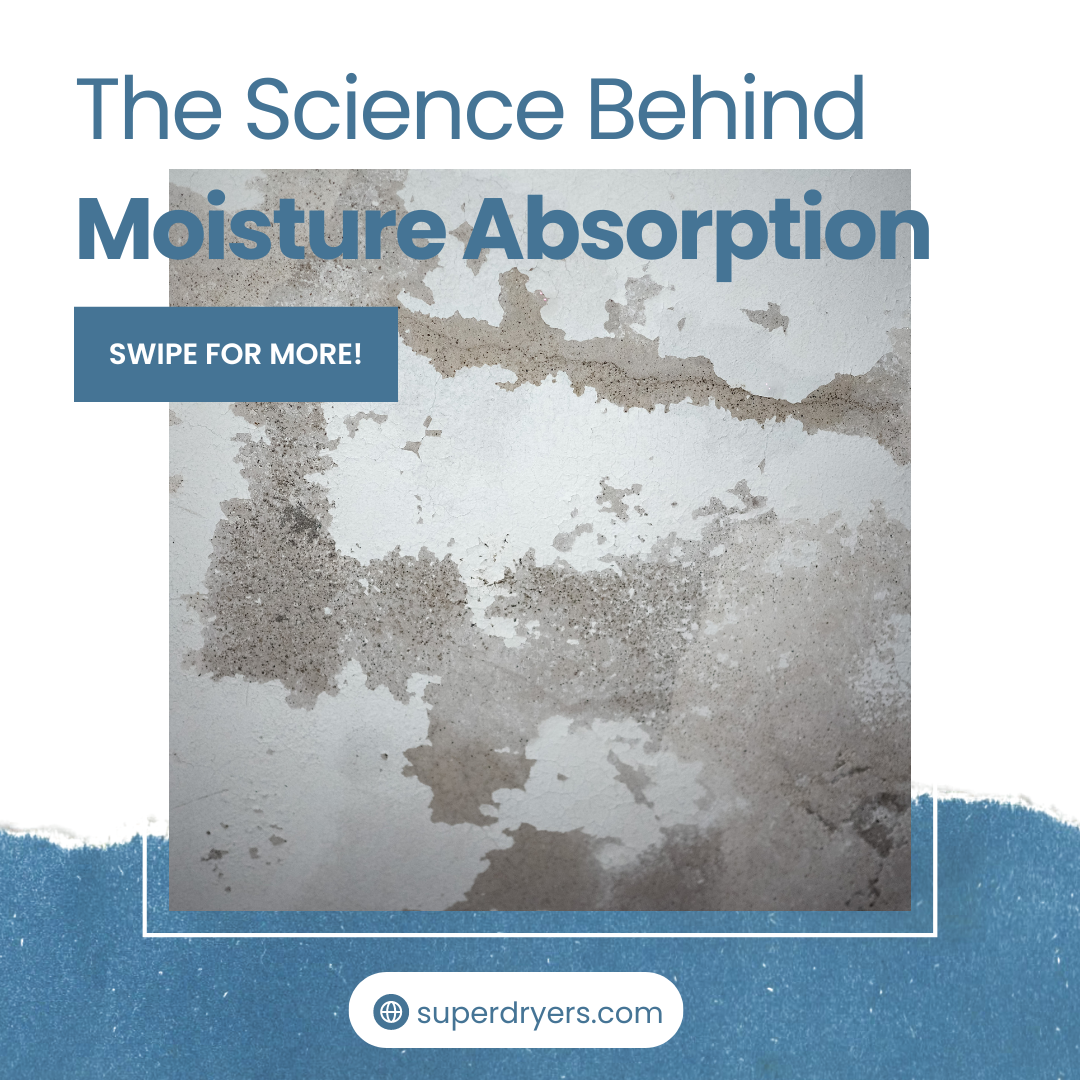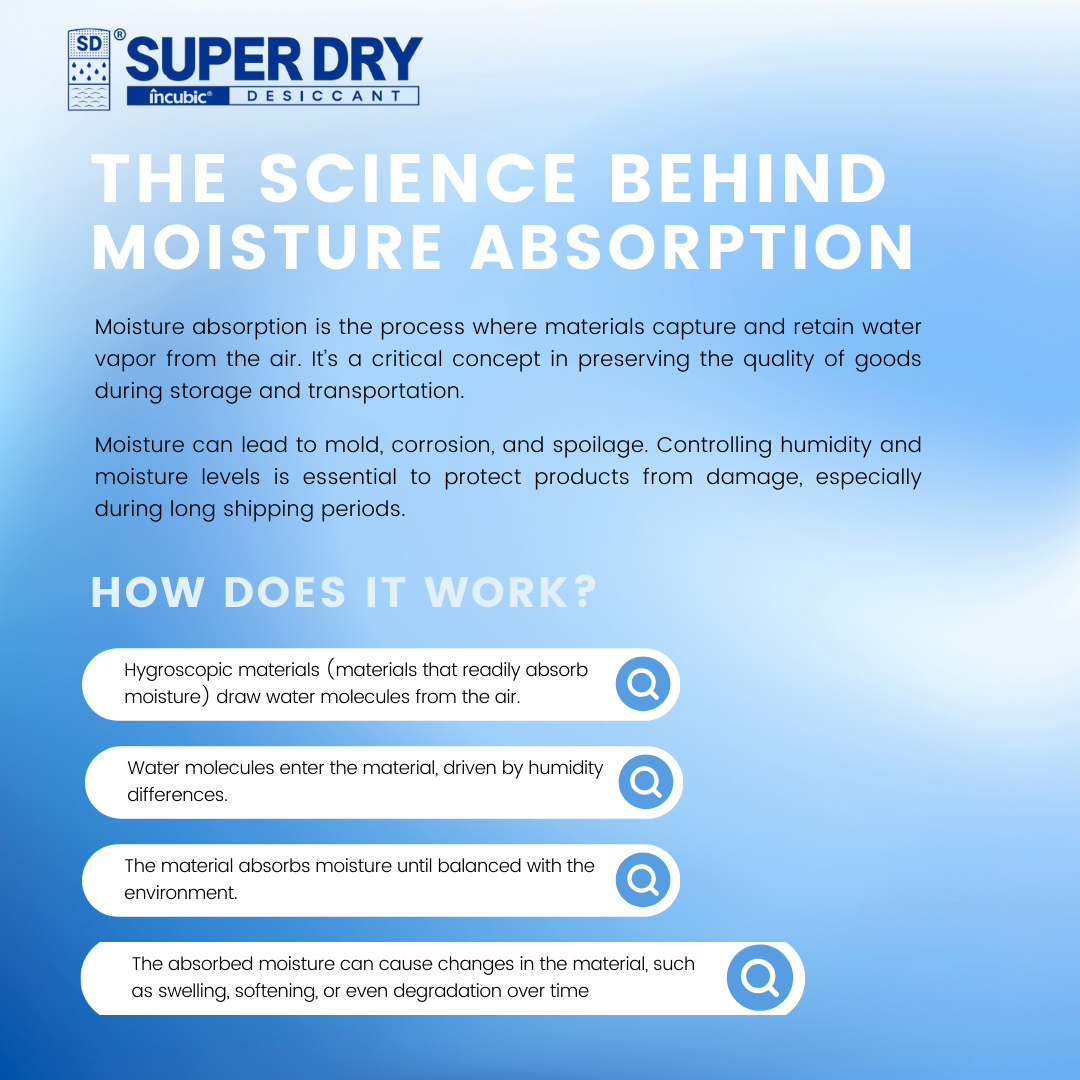The Science Behind Moisture Absorption


Moisture absorption is a critical process that affects many industries, from packaging and shipping to construction and manufacturing. Understanding how it works can help businesses protect their products from damage caused by excess moisture. Here’s how moisture absorption work:
- Attraction:
Hygroscopic materials, like wood, cardboard, and certain fabrics, naturally attract water molecules from the surrounding air. This attraction is due to the material’s ability to form bonds with water molecules, drawing them in from the environment.
- Penetration:
Once water molecules are attracted to the material’s surface, they penetrate the material, moving into its pores or fibers. This penetration occurs because of differences in humidity between the material and the surrounding environment, driving the moisture into the material.
- Equilibrium:
As the material continues to absorb moisture, it eventually reaches a state of equilibrium, where the amount of moisture within the material balances with the humidity of the surrounding air. At this point, the material stops absorbing water, having reached its capacity.
- Result:
The absorbed moisture can cause changes in the material, such as swelling, warping, or degradation. In packaging and shipping, this can lead to damaged goods, reduced product quality, and financial losses.
The Role of Desiccants:
Desiccants, like those offered by Super Dry, are essential for controlling moisture in environments where hygroscopic materials are present. By absorbing excess moisture, desiccants help maintain a dry environment, protecting products from the damaging effects of moisture absorption.
Understanding the science behind moisture absorption allows businesses to take proactive measures to safeguard their products, ensuring they arrive in perfect condition. With the right strategies, including the use of effective desiccants, moisture-related damage can be significantly reduced.
